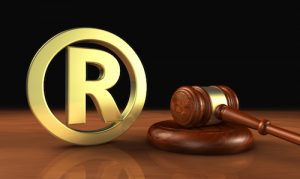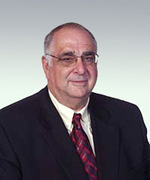“The fact is that the Internet has become the leading way to develop the kinds of surveys courts accept in trademark matters.”
 Surveys to prove or disprove trademark infringement or likelihood of confusion have been used by attorneys for many years. Unfortunately, many attorneys using surveys can weaken a survey’s impact by failing to avoid some crucial pitfalls.
Surveys to prove or disprove trademark infringement or likelihood of confusion have been used by attorneys for many years. Unfortunately, many attorneys using surveys can weaken a survey’s impact by failing to avoid some crucial pitfalls.
Here are 10 important things to avoid and correct when developing surveys for litigation purposes.
1. Avoid Directing Survey to Wrong Relevant Target Market
Courts disqualify surveys for this more than any other factor. The first and most crucial step in the survey process is to make sure you are questioning the right relevant target market. There are several obvious ways to find the relevant target market. If a product or product line is involved, appropriate sales data should be analyzed. Where is the product sold? Who is buying it? If it is a service, who is using the service? Why are they using it? These are good starting points. The client’s marketing manager should be able to provide information on those market segments being targeted. If the client advertises, what media does it use? Knowing where advertising dollars are spent usually gives strong insight into whom the marketer is trying to reach. In developing questionnaires, it is important that questions be directed to prospective product purchasers or service users as well as past and present customers and users
2. Try to Make Use of Internet Surveys Whenever Possible
The Internet has replaced almost every other data-gathering alternative. This medium for data gathering has not only been accepted by courts, judges prefer this kind of data because the Internet has been acknowledged as the most effective means for data collection.
In “A comparative Empirical Analysis of Online Versus Mall and Phone Methodologies for Trademark Surveys” by Hal Poret (The Trademark Reporter, The Law Journal of the International Trademark Association, May- June 2010), the author writes: “Despite these many theoretical and practical concerns, the number of actual judicial criticisms of online surveys is quite small…. Courts considering online surveys conducted in 2009 and 2010 seem not to question the use of online methodologies at all, finding them admissible without raising any concerns regarding the use of the Internet…. Most importantly, perhaps, the Internet is now the single most common means of collecting consumer opinion and behavior data in the market research industry.”
Similar validations of Internet research have appeared in other peer-reviewed articles. The fact is that the Internet has become the leading way to develop the kinds of surveys courts accept in trademark matters. Telephone surveys have become far more difficult because of the use of cell phones and caller ID. Mall intercept surveys also have become passé, since malls mostly attract younger or older people – not the good cross-section that one seeks in developing surveys. Pew Research statistics show that 77% of Americans use the Internet every day. Pew reports that 26% are online constantly. Massachusetts Institute of Technology (MIT) reports the average American spends nearly 24 hours per week online.
3. Make Sure You Have Provided Enough Time to Complete the Survey
Going into the survey process, make absolutely sure you have provided enough time to do the survey and issue the expert’s report. Although many attorneys shy away from surveys because they believe it may take too long to develop and execute a survey and produce results, there is a happy medium. Generally, most surveys can comfortably be started and completed in a two-month time frame. In emergency situations, they can be developed faster. Also, pilot surveys can be developed very quickly; sometimes within a week. The use of Internet panels greatly accelerates the time frame to complete a survey. One can do a complete Internet consumer survey in as few as 7-10 business days. On the other hand, surveys involving harder-to-reach target markets might take a lot longer. In certain cases—like surveys of doctors or medical specialists—reaching these targets could take longer and might involve developing special incentives.
4. Make Sure Enough Money Is Allocated to the Survey Budget
There is a commonly held belief that trademark surveys are terribly expensive. This is not necessarily so. Thanks to the Internet, one can develop a consumer product survey for as little as $20,000 to $25,000 and this includes: hiring the survey expert to develop and manage the entire process; the costs for developing the methodology; performing a pilot survey; hiring an independent research company to implement the questionnaire; hiring a company to tabulate the survey; and development of a final report for court submission. Many attorneys live with the belief that the combined costs of all those activities fall in the $50,000 to $100,000 range. In my experience, rarely does a well-planned, well-executed survey to about 250 respondents cost more than $25,000. Surveys begin getting more expensive when it becomes necessary to reach smaller, more obscure target markets. Business-to-business surveys become costlier when it becomes necessary to include specific users of industrial, commercial or medical products. Surveying doctors can be costly as well, because it becomes necessary to get them to spend time. Higher incentives are needed to reach this target market. Fortunately, there are trade publications and association directories and other list sources that can be used. But, for the most part, when dealing with expensive, durable consumer products like cars and refrigerators, for example, or inexpensive packaged goods like breakfast cereal, costs can be controlled. Costs for reaching the proper relevant target market becomes an important budget item.
5. Test for BOTH Validity and Reliability
The worth of any survey generally is evaluated based on two key dimensions—Validity and Reliability. These two concepts are both simple and crucial.
“Validity” refers to the ability of the survey to test what needed to be tested. “Reliability” refers to the ability of the survey to produce consistent results when given multiple times in multiple places. A survey that produces interesting results that are extraneous to the key issue at stake is said to lack validity. A mall intercept that produces different results based on different regions of the country or different clienteles is said to lack reliability. Internet surveys always provide geographic and demographic breakdowns. One can easily detect variations between people in different sections of the country. Such analysis gives good evidence of reliability.
6. Using Multiple Survey Experts for the Same Issue Can Doom a Survey
The idea that two experts are better than one and their testimony will build a stronger case is a myth. There is always a chance that the experts might not agree, and a legal adversary can play one expert off against the other. One can assume that no two experts are going to agree on everything, and by the time the deposition process has been completed, there is a good chance the adversarial attorney will exploit these inconsistencies to weaken the case. If the matter requires more than one expert, such as one expert to perform a secondary meaning survey and another to perform a likelihood of confusion survey, make sure each expert reviews the other expert’s report before drafting their report. The goal is to avoid contradictions. Often, there is an expert to probe likelihood of confusion and another expert to assess damages. There usually is no conflict in these cases, but experts should be aware of the findings of all other experts in the case.
7. Don’t Believe You Have Produced the “Perfect Survey”
There is no such thing as the “perfect survey.” In every case, another survey expert will critique a survey and will offer explanations of what the adversarial expert believes are flaws in the survey. In most cases, surveys are not cookie-cutter processes. Every case is different in some way. While tried-and-true protocols can be used, there is almost always a need to do some kind of modification. The rebuttal expert generally will present alternative methodologies and will second-guess the expert’s report. If you are searching for perfection in a trademark survey, you’ll never find it. Don’t ever believe you have produced the “perfect survey.” Going into the survey process, be proactive when it comes to areas of anticipated criticism. Experienced survey experts also do a lot of rebuttal work, so an experienced expert is ready for anticipated answers to the rebuttal witness.
8. Don’t Develop a Control When It Is Not Needed
There is a misconception that every survey should have a companion “control” survey or “control” questions within a survey. A control group in a scientific survey is a group separated from the rest of the survey, where the variable tested cannot influence the results. This isolates what is being tested and can help rule out alternative explanations for the experimental results. “Controls” are only mandatory in surveys that test causation. The easiest way to understand the “control” process is to look at the new drug model where the ingestion of the drug is the independent variable and the resulting cure rate is the dependent variable. The “test” group are those given the new pill and the “control” group are those given the placebo (sugar pill). The results of those taking the test pill minus those who said they were cured by the sugar pill will provide the net effectiveness of the new drug. This clearly is causation. Did the taking of the pill cause the illness to go away? In a survey to test whether an advertisement caused somebody to buy a product, a “control” would be required. In many surveys where mere recognition is tested or where products are compared with each other, it may not be necessary to include a “control.” If it is possible and/or easy to include a “control,” do it because judges expect to see “controls” even though they may not understand them. But don’t develop a “control” if such a “control” weakens the key findings of the survey or is too expensive or cumbersome.
9. Avoid Leading and Compound Questions
Whether creating or critiquing a survey, one should avoid “leading” questions and compound questions. A “leading” question is one in which the question itself suggests the answer. Obvious leading question: “Would you say this 60-inch television has a large viewing area?” [YES, NO or DON’T KNOW.] Obvious compound question: “Does SONY make and market this TV?” [YES, NO or DON’T KNOW.] Use of leading and/or compound questions can jeopardize the credibility of an intellectual property survey.
10. Don’t Disregard Ancillary Data Learned from a Survey
A survey will often produce interesting information in addition to the specific data needed to address the survey’s hypothesis. This ancillary data will be reported in the survey tabulation. It is important that all ancillary data learned from the survey is explained in the survey report. If it is not fully explained, it will generate questions in a deposition or trial. Sometimes, this ancillary data is not favorable to either the plaintiff or the defendant. If not explained, that ancillary data may be embarrassing. It also may jeopardize the good results that come out of the survey. Therefore, all data coming from a survey should be fully explained.
Note: In any discussion of costs, the author can only use his own frame of reference.
Image Source: Deposit Photos
Image ID: 161903838
Copyright: NiroDesign

![[IPWatchdog Logo]](https://ipwatchdog.com/wp-content/themes/IPWatchdog%20-%202023/assets/images/temp/logo-small@2x.png)

![[Advertisement]](https://ipwatchdog.com/wp-content/uploads/2024/04/Patent-Litigation-Masters-2024-sidebar-early-bird-ends-Apr-21-last-chance-700x500-1.jpg)

![[Advertisement]](https://ipwatchdog.com/wp-content/uploads/2021/12/WEBINAR-336-x-280-px.png)
![[Advertisement]](https://ipwatchdog.com/wp-content/uploads/2021/12/2021-Patent-Practice-on-Demand-recorded-Feb-2021-336-x-280.jpg)
![[Advertisement]](https://ipwatchdog.com/wp-content/uploads/2021/12/Ad-4-The-Invent-Patent-System™.png)







Join the Discussion
No comments yet.